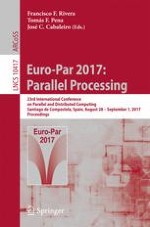2017 | OriginalPaper | Buchkapitel
NVIDIA Jetson Platform Characterization
verfasst von : Hassan Halawa, Hazem A. Abdelhafez, Andrew Boktor, Matei Ripeanu
Erschienen in: Euro-Par 2017: Parallel Processing
Aktivieren Sie unsere intelligente Suche, um passende Fachinhalte oder Patente zu finden.
Wählen Sie Textabschnitte aus um mit Künstlicher Intelligenz passenden Patente zu finden. powered by
Markieren Sie Textabschnitte, um KI-gestützt weitere passende Inhalte zu finden. powered by
